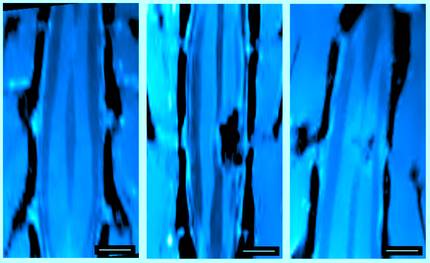They manage to reconnect neurons of spinal cord injuries
_article_big.jpg)
CIC bioma GUNE researchers in Donostia and SISSA in Italy have taken an important step in recovering spinal injuries. They have managed to restore the connection between neurons and repair the lesion.
They had already found that in in vitro systems, that is, in cell cultures, neuronal connections were created, but the leap to an in vivo in injured animals of the spinal cord was missing. On this occasion, functional results have been obtained in animals with partially cut spinal cord, reconnecting the fibers effectively. The nerves have been reconnected in the place where they were injured and, in addition, the animals have recovered the functionality of the legs. It has also been shown to be a biocompatible material, that is, no immune reaction has been detected.

For this purpose, biomaterials based on carbon nanotubes have been used, since they foresaw that their electrical and mechanical properties were adequate. In particular, carbon nanotubes can be interesting to generate interactions between nerve cells and exciting cardiac cells. In addition to allowing intercellular communication, CIC bioma GUNE researchers ensure that mechanically stable scaffolding can be built with them to maintain nervous growth. In this case, they have used a kind of sponge formed by carbon nanotubes, formed by fibers that cross each other.
The work, published in the journal PNAS and according to the researchers of CIC bioma GUNE, will be a great step forward for the appearance of spinal cord injuries, optic nerve lesions or traumatic lesions that impede the connection between neurons. But they speak of prudence, because the time is still far from extending it to human beings. There are many aspects that must still be worked from the point of view of the material, from the point of view of the conditions of implantation, from the point of view of the conditions of action of the material, etc. For example, it is essential to deepen the microstructural and mechanical properties of the material, as well as the properties that facilitate the connection between neurons to avoid side effects or rejection of the material itself by the body (stiffness, elasticity, sponging, compactness, pore size between fibers, etc. ).
On the other hand, one of the most important aspects of this reconnection process is to know if the same previous connections to the lesion occur or if a neuronal plasticity occurs, that is, if connections that did not exist before are created and in this way seeks another way to reconnect the nervous systems to adapt to the new situation.





